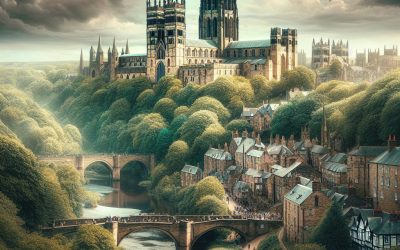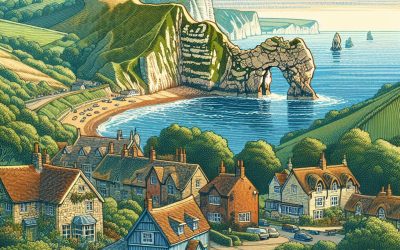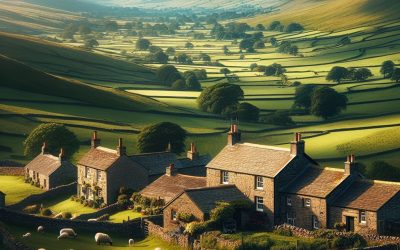Explore the World Through Geography, Natural Resources & Daily History
Clear, reliable and engaging guides that help you understand our planet — from UK geography education to global natural resources and On This Day history events.
Explore, discover, and learn about the wonders of our world! At Earth Site, we’re passionate about bringing geography, history, and science to life for curious minds of all ages. Whether you’re delving into historical events, uncovering the mysteries of the natural world, or seeking interactive resources, you’re in the right place.
Here, you can uncover the stories behind historical events, explore the natural wonders of our planet, and gain valuable insights into how the Earth’s systems shape our daily lives. From the towering peaks of mountain ranges to the far-reaching impacts of human innovation, we aim to make every topic both engaging and informative.
Start your journey of discovery with us today, and let’s make learning an adventure!
What We Cover
Earth Site brings together engaging and accessible educational content designed to help you understand the world, its history, and its natural systems.
🌍 Geography Education (UK & Worldwide)
We publish clear, easy-to-understand geography resources for students, teachers and curious learners. Our guides support geography education in the UK and cover physical geography, climate, ecosystems, population, and global development.
⛏️ Natural Resources & Environmental Geography
Explore detailed country profiles covering natural resources, mining, energy, geology and global environmental challenges. We show how nations manage minerals, water, land and ecosystems, and why these resources matter.
📅 On This Day in History
Every day has a story. Our On This Day history series features major events, anniversaries, traditions, and cultural milestones from around the world — with timelines, context, and fun facts.
TIMELINE
Shining a Light on the Versatility and Value of Silver (Ag)
Silver has been a highly valued and sought-after metal for centuries. Its timeless appeal can be attributed to its beauty, versatility, and enduring worth. From ancient civilizations to modern times, silver has played a significant role in various aspects of human life. Whether it is used in jewellery, technology, or as a form of currency, silver continues to hold its place as a precious metal with immense value. Despite the advancements in technology and the introduction of new materials, silver remains relevant today. Its unique properties make it indispensable in various industries, and its aesthetic appeal continues to captivate people around the world. The enduring popularity of silver can be attributed to its ability to adapt and evolve with the changing times. Summary Silver is a precious metal with timeless appeal and enduring worth. Silver has many forms, from jewellery to industrial applications, and is a key component in modern technology. Silver has a rich history, from ancient civilizations to modern times, and has played a role in currency and artistic expression. Silver has anti-microbial properties and other health benefits, making it a valuable material in healthcare. Investing in silver can be a safe haven for wealth preservation, and the future of silver technology is full of innovations and advancements. The Many Forms of Silver: From Jewellery to Industrial Applications Silver comes in various forms, each with its own unique characteristics and uses. One of the most well-known forms of silver is jewellery. Silver jewellery has been worn by people for centuries, admired for its beauty and elegance. From delicate necklaces to intricate bracelets, silver jewellery continues to be...
East Sussex, England
East Sussex is a county located on the southeastern coast of England. It is known for its stunning natural beauty, rich history, and vibrant cultural scene. With its picturesque landscapes, historic towns and villages, and a wide range of activities and attractions, East Sussex offers something for everyone. East Sussex has played a significant role in English history. It was the site of the Battle of Hastings in 1066, which marked the beginning of Norman rule in England. The county is also home to several historic castles and landmarks that showcase its medieval past. Additionally, East Sussex has been a hub for artistic and cultural movements throughout history, with many renowned artists and writers finding inspiration in its landscapes. Summary East Sussex is a coastal county with a rich history and culture. The natural beauty of East Sussex includes the South Downs and beaches. Historic towns and villages like Hastings and Rye are waiting to be discovered. East Sussex has a thriving art and cultural scene with museums, galleries, and festivals. Local specialties and dining experiences make East Sussex a foodie’s paradise. Exploring the Natural Beauty of East Sussex: From the South Downs to the Beaches One of the highlights of East Sussex is the South Downs National Park, which covers a large portion of the county. The park offers breathtaking views of rolling hills, picturesque villages, and ancient woodlands. It is a paradise for hikers and nature lovers, with numerous trails and paths to explore. Another natural wonder in East Sussex is the Seven Sisters Cliffs. These iconic chalk cliffs stretch along the coastline and provide stunning...
East Riding, England
East Riding, located in the northeastern part of England, is a region steeped in history and natural beauty. It is one of the three historic subdivisions of the county of Yorkshire, along with North Riding and West Riding. The region has a rich and diverse history, with evidence of human habitation dating back to the Mesolithic period. Throughout the centuries, East Riding has been influenced by various cultures and civilizations, including the Romans, Vikings, and Normans. The geography of East Riding is characterized by its diverse landscapes, ranging from the stunning coastline along the North Sea to the rolling countryside and picturesque villages. The region is home to several market towns, including Beverley, Driffield, and Bridlington, which offer a glimpse into the area’s past with their historic buildings and charming streets. The population of East Riding is approximately 600,000 people, making it a vibrant and thriving community. Summary East Riding has a rich historical background that dates back to the Roman era. The natural beauty of East Riding is breathtaking, with stunning coastlines and rolling hills. East Riding is home to numerous museums and galleries that showcase the region’s cultural heritage. The local cuisine in East Riding is diverse and delicious, with a focus on fresh seafood and locally sourced produce. East Riding boasts several castles and stately homes that offer a glimpse into the region’s past. Exploring the Natural Beauty of East Riding One of the main attractions of East Riding is its natural beauty. The region boasts a stunning coastline that stretches for miles, with sandy beaches, rugged cliffs, and charming seaside towns. Popular destinations...
Palladium: The British-Born Metal Shaping Our Future
Palladium is a precious metal that plays a crucial role in modern technology. From its discovery in the early 19th century to its current applications in various industries, palladium has proven to be an essential element with unique properties. In this blog post, we will explore the history of palladium, its properties, and its importance in industries such as automotive, electronics, renewable energy, and jewellery. Additionally, we will discuss the global palladium market, the environmental and social impacts of its production, and the opportunities and risks associated with investing in palladium. Summary Palladium was discovered in 1803 by William Hyde Wollaston. Palladium’s unique properties, such as its high melting point and ability to absorb hydrogen, make it essential in modern technology. Compared to other precious metals, palladium is more abundant and less expensive, making it a popular choice in industries such as automotive and electronics. Palladium is used in catalytic converters to reduce harmful emissions in cars, and is also found in smartphones, satellites, and fuel cells. The global palladium market is projected to continue growing, but the environmental and social impacts of mining and production must be considered. Investing in palladium can be lucrative, but comes with risks. A Brief History of Palladium: From Discovery to Modern Applications Palladium was discovered by British chemist William Hyde Wollaston in 1803. He named it after the asteroid Pallas, which had been discovered a few years earlier. Initially, palladium was used for decorative purposes due to its silver-white appearance. However, it wasn’t until the 20th century that its true potential was realized. In the early 1900s, palladium found its first major...
Durham, England
Durham is a historic city located in the North East of England. Situated on the banks of the River Wear, Durham is known for its rich history, stunning architecture, and vibrant cultural scene. The city is home to Durham Cathedral, a UNESCO World Heritage Site, and Durham Castle, which is now part of Durham University. With its picturesque riverbanks, charming streets, and friendly community, Durham has become a popular tourist destination. Durham’s location in the North East of England makes it easily accessible from major cities such as Newcastle and York. The city’s significance dates back to Anglo-Saxon times when it was a strategic location for defending against Viking invasions. Over the centuries, Durham grew in importance as a center of religious and political power. Today, visitors come to Durham to explore its fascinating history, admire its architectural wonders, and experience its unique charm. Summary Durham is a historic city located in North East England. The city has a rich history dating back to Anglo-Saxon times and is home to many iconic landmarks, including Durham Cathedral and Durham Castle. Durham Cathedral is a UNESCO World Heritage Site and is considered one of the finest examples of English architecture. Durham Castle was originally a Norman fortress but has since been converted into a prestigious university. Visitors can also enjoy exploring Durham’s picturesque riverbanks and bridges, as well as its hidden gems such as museums, galleries, and theatres. The History of Durham: From Anglo-Saxon Times to the Present Day Durham has a long and storied history that spans over a thousand years. The city was founded in the 10th century...
Dorset, England
Dorset, located in the southwest of England, is a county known for its natural beauty and rich history. With a population of around 770,000, Dorset is home to stunning landscapes, charming villages, and historic landmarks. The county has a long and fascinating history, with evidence of human habitation dating back thousands of years. Dorset is blessed with an abundance of natural beauty, from its rolling hills and picturesque countryside to its stunning coastline. The county is perhaps best known for its Jurassic Coastline, which stretches for 95 miles and is a designated UNESCO World Heritage Site. This stretch of coastline is renowned for its geological importance, as it showcases 185 million years of Earth’s history. Visitors can explore iconic landmarks such as Durdle Door and Lulworth Cove, which offer breathtaking views and opportunities for outdoor activities. Summary Dorset is a county of natural beauty and rich history, with plenty of attractions to explore. The Jurassic Coastline is a must-visit World Heritage Site, offering stunning views and fascinating geological features. Dorset’s rural villages and towns are full of charm and character, with plenty of hidden gems to discover. The county’s museums and galleries offer a rich cultural heritage, showcasing everything from local art to ancient artefacts. Dorset’s famous festivals and events celebrate the region’s unique culture and traditions, with something for everyone to enjoy. Exploring the Jurassic Coastline: Dorset’s World Heritage Site The Jurassic Coastline is a must-visit destination for nature lovers and history enthusiasts alike. This World Heritage Site is not only visually stunning but also holds significant scientific value. It is one of the most important places...
Uncovering the Beauty of Rhodium: The Rare and Radiant Metal
Rhodium is a precious metal that is often overlooked in comparison to gold and silver, but it holds its own unique value and importance in various industries. It is a member of the platinum group metals (PGMs) and is known for its rarity, high melting point, and resistance to corrosion. Rhodium is often used as a catalyst in chemical reactions, as well as in the production of jewellery, electronics, and automotive components. When compared to gold and silver, rhodium stands out for its rarity. It is estimated that the annual production of rhodium is only around 30 tons, making it one of the rarest elements on Earth. In contrast, gold has an annual production of around 3,000 tons, while silver has an annual production of around 27,000 tons. This scarcity contributes to the high value of rhodium in the market. Rhodium’s importance in various industries cannot be understated. In the automotive industry, it plays a crucial role in catalytic converters, helping to reduce harmful emissions from vehicles. In the jewellery industry, rhodium plating enhances the beauty and durability of precious gems. In electronics manufacturing, rhodium is used in electronic components for its excellent conductivity and resistance to corrosion. These applications highlight the versatility and value of rhodium beyond its counterparts. Summary Rhodium is a precious metal that is rarer and more valuable than gold and silver. Rhodium has a rich history, from its discovery in the early 19th century to its modern-day applications in various industries. Rhodium has unique properties, including high reflectivity and resistance to corrosion, that make it useful in jewellery, automotive catalytic converters, electronics, and medicine....
Devon, England
Located in the southwest of England, Devon is a county known for its stunning natural beauty and rich history. With its diverse landscape, from the rolling hills of Dartmoor to the dramatic cliffs of the Jurassic Coast, Devon offers visitors a wide range of outdoor activities and breathtaking scenery. In addition to its natural attractions, Devon is also home to a wealth of historical landmarks and architectural treasures. In this post, we will explore the geography, history, architecture, cuisine, festivals, beaches, outdoor activities, wildlife, and towns and cities of Devon. By the end of this article, readers will have a comprehensive understanding of what makes Devon such a special place to visit. Summary Devon is a land of natural beauty and rich history, making it a popular destination for tourists. From the Exmoor National Park to the Jurassic Coast, Devon’s geography offers a diverse range of landscapes to explore. Devon’s history spans from prehistoric times to the present day, with many historical sites and landmarks to discover. Devon’s architecture is a blend of medieval, Georgian, and Victorian styles, adding to the charm of the region. Devon’s cuisine is a highlight, with cream teas and seafood delights being popular dishes to try. Devon’s Geography: From the Exmoor National Park to the Jurassic Coast Devon’s geography is incredibly diverse, offering visitors a wide range of landscapes to explore. The county is home to two national parks: Dartmoor and Exmoor. Dartmoor National Park is known for its rugged granite tors, vast open moorland, and ancient woodlands. It is a paradise for hikers and nature lovers, with numerous walking trails and opportunities...
Derbyshire, England
Derbyshire is a county located in the East Midlands region of England. It is bordered by several other counties, including Nottinghamshire, South Yorkshire, and Staffordshire. The county has a rich history that dates back to Roman times, and it has played an important role in the development of the UK. Derbyshire is known for its diverse geography, which includes rolling hills, limestone valleys, and the famous Peak District National Park. The county is also home to several rivers, including the River Derwent and the River Trent. The landscape of Derbyshire has been shaped by centuries of human activity, from mining and agriculture to the Industrial Revolution. Summary Derbyshire is a county in the East Midlands region of England with a rich history and diverse geography. The Peak District National Park is a must-visit destination in Derbyshire, offering stunning natural beauty and outdoor activities. Derbyshire has a rich cultural heritage, with historic sites such as Chatsworth House and Haddon Hall. The county played a significant role in the Industrial Revolution, with innovations in textiles, mining, and engineering. Famous landmarks and attractions in Derbyshire include the historic spa town of Buxton and the impressive Derwent Dam. Derbyshire’s traditional cuisine is a gastronomic delight, with dishes such as Bakewell pudding and Derbyshire oatcakes. Sports and leisure activities in Derbyshire range from football and cricket to hiking and cycling. Festivals and events in Derbyshire celebrate local culture, such as the Bakewell Show and the Matlock Bath Illuminations. Accommodation options in Derbyshire range from cozy B&Bs to luxury hotels, with something to suit every budget and preference. When planning your visit to Derbyshire, be...
Exploring the Versatility of Ruthenium: A British Perspective
Ruthenium is a rare and precious metal that belongs to the platinum group of elements. It is known for its unique properties, including its high melting point, corrosion resistance, and ability to withstand extreme temperatures. Ruthenium was discovered in 1844 by the British chemist Karl Ernst Claus, who named it after Russia, as he found it in the Ural Mountains. Since then, ruthenium has played a significant role in various industries and has become an essential element in many applications. Summary Ruthenium is a precious metal with a British connection. Ruthenium has a rich history, from its discovery to its modern-day applications. Ruthenium is used in the chemical industry as a catalyst and beyond. Ruthenium has applications in medicine, particularly in cancer treatment and imaging. Ruthenium plays a role in renewable energy, electronics, art and jewelry, sports, and sustainability. The History of Ruthenium: From Its Discovery to Its Modern-Day Applications The story of ruthenium begins with its discovery by Karl Ernst Claus, who was studying platinum ores in the Ural Mountains. Claus isolated a dark powder that he initially believed to be a new element, but later realized it was a compound of platinum and another unknown metal. He named this new metal “ruthenium” after Russia, as the Ural Mountains were part of the Russian Empire at the time. In its early years, ruthenium had limited uses and applications. It was primarily used as an alloying agent to improve the hardness and corrosion resistance of platinum and palladium. However, as scientists began to explore its properties further, they discovered its potential in various industries. Today, ruthenium has found its...
Cumbria, England
Cumbria, located in the northwest of England, is a county known for its stunning natural beauty and rich history. It is bordered by Scotland to the north, Northumberland to the east, County Durham and North Yorkshire to the southeast, Lancashire to the south, and the Irish Sea to the west. Cumbria has a long and fascinating history, with evidence of human habitation dating back to the Stone Age. The county is also home to the Lake District National Park, which is renowned for its breathtaking landscapes and outdoor activities. Cumbria’s natural beauty is one of its biggest draws for visitors. The county is home to the Lake District National Park, which covers an area of over 2,300 square kilometers and is considered one of the most beautiful places in the UK. The park is characterized by its stunning lakes, rugged mountains, and picturesque villages. It offers a wide range of outdoor activities, including hiking, cycling, boating, and wildlife watching. In addition to its natural beauty, Cumbria also has a rich history that can be explored through its many historic sites and landmarks. The county has a long and fascinating history that dates back thousands of years. It was once part of the ancient kingdom of Rheged and later became an important center for Roman occupation. Cumbria is also home to several historic castles and stately homes, including Carlisle Castle and Muncaster Castle. Summary Cumbria is a county with natural beauty and rich history. The Lake District National Park is the crown jewel of Cumbria and worth exploring. Cumbria’s coastal towns and villages are worth discovering. Cumbria has a rich...
Cornwall, England
Cornwall, located in the southwestern part of England, is a region known for its stunning coastline, rich history, and vibrant culture. This blog post will provide a comprehensive guide to Cornwall, covering its history from ancient times to the present day, the best beaches and walks along its coastline, its culinary heritage including the famous Cornish pasty, its mining industry and popular mining sites to visit, its artistic and cultural scene with museums, galleries, and festivals, its beautiful gardens, the legends of King Arthur associated with the region, its diverse wildlife, the best places to stay in Cornwall, and the top attractions that should not be missed. Whether you are a history buff, a nature lover, or simply seeking a relaxing beach holiday, Cornwall has something to offer for everyone. Summary Cornwall has a rich history dating back to ancient times, with evidence of human settlement from the Neolithic period. The coastline of Cornwall is home to some of the most stunning beaches and walks in the UK, including the famous South West Coast Path. The Cornish pasty is a delicious culinary heritage of Cornwall, with a history dating back to the 13th century. Cornwall’s mining heritage is a fascinating part of its history, with tin and copper mining playing a significant role in the region’s economy for centuries. Cornwall has a thriving artistic and cultural scene, with museums, galleries, and festivals showcasing the region’s unique heritage and contemporary creativity. The History of Cornwall: From Ancient Times to the Present Day Cornwall has a rich and fascinating history that dates back thousands of years. In prehistoric times, Cornwall...











